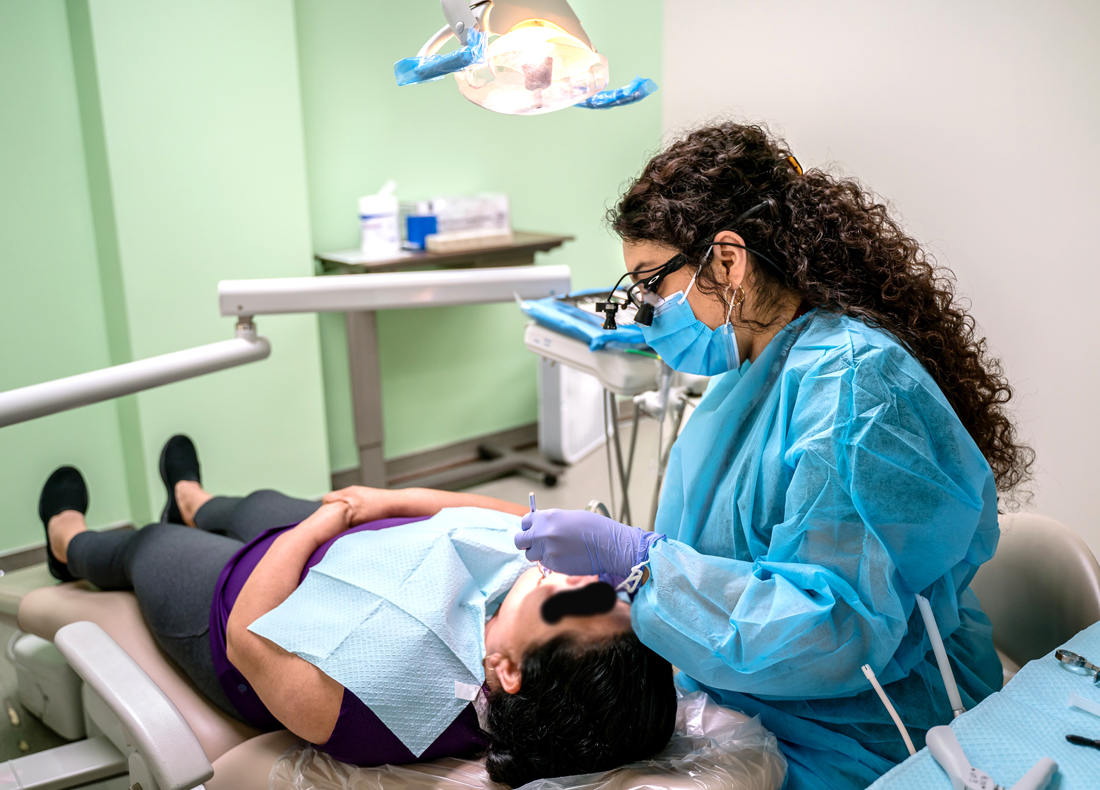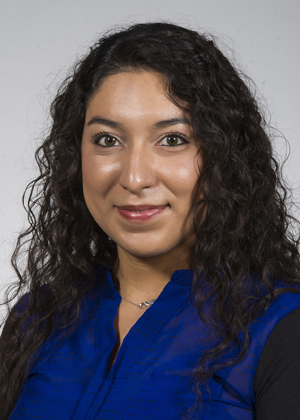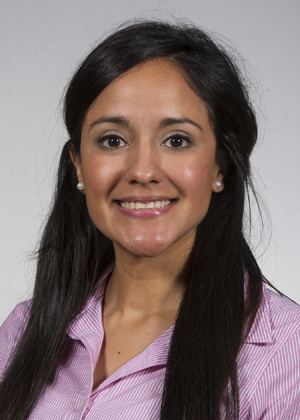Returning to their roots

Settling into their first post-dental-school jobs, Dr. Maleny Romero and Dr. Adriana Riojas-Soto marvel at how their choice to return to their old stomping grounds to help the underserved has brought them unexpected fulfillment.
While they were dental students, the 2020 graduates were offered an enticing proposition from Texas Recruits & Retains: a one-year commitment to practice in Dental Health Professional Shortage Areas (D-HPSA) in return for a scholarship to help defray the cost of dental school.

Romero and Riojas-Soto are the first Texas A&M College of Dentistry scholarship participants in Texas Recruits & Retains: A Dental Public Health Workforce Development Program. The four-year grant is funded by the Health Resources and Services Administration. The project aims to develop the dental public health workforce in Texas, and is a collaboration with three dental schools in Texas and the Texas Department of State Health Services.
“We provide all types of services to both children and adults in dental shortage areas,” says Romero, who now works in West Texas at Borger Smiles in Borger and Smiles Zone in Pampa for Altius Dental. “A little over 50% of patients we treat are children and underserved minority groups.”
When Riojas-Soto left the Rio Grande Valley for college years ago, she never planned to return. Romero, who was keenly aware of the dental shortage in the Texas Panhandle, says she knew she’d head back to her hometown once she graduated.

“I grew up in an underserved community with limited doctors and dentists,” she says. “Through this scholarship, I am able to serve in Medically Underserved Areas or D-HPSA-designated locations. This scholarship was a win-win situation.”
The Texas Recruits & Retains project, spearheaded by Dr. Peggy Timothé, assistant professor in public health sciences and principal investigator, specifically focuses on three areas: scholarships for students who commit to practice in underserved areas for the first year after they graduate, student-assisted summer research with the Office of Research, and interprofessional clinical opportunities between dental students and dietetic interns. That pilot program, overseen by Registered Dietitian Lisa Mallonee, professor in dental hygiene, launched in spring 2020. The pandemic sidelined that component until further notice.
For the 2019-2020 academic year, 17 students at the three dental schools received a total of $101,000, $58,000 of which went to Dallas students. Romero and Riojas-Soto started their service obligations this summer after graduation.
“The Texas A&M College of Dentistry Post-Baccalaureate Program and this scholarship helped encourage me to return to the valley because of its focus on the underserved populations. And, of course, dental school is expensive, so the scholarship was financially appealing as well,” Riojas-Soto says.
Four current D4s, Amna Khan, Velina Lopez, Lianna Pulliam and Anthony Smith, will take on similar roles after they graduate in 2021.
Although Riojas-Soto has only been on the job at De La Garza Family Dental in Weslaco for a few months, she is already seeing how a hometown girl returning as an accomplished professional gives high school students and young adults there a window into possibilities outside the city limits.
She says she has been especially touched by “seeing their eyes and reactions when they hear I graduated from their high school, marched as a member of the Panther Corps, and had some of the same teachers, and seeing how far I’ve come, how hopeful they are that they too can achieve success.”
Romero has built a similar rapport with her patients, and she’s noticing the benefits of practitioner/patient communication skills she learned at dental school.
“Dentistry is not just about drilling and filling. It’s about building long-term relationships with our patients and doing what is right to offer the best dental care,” she says. “It is important to pay attention to how we speak to our patients, our tone of voice and even body language. Patients pay attention to that. If patients feel comfortable at your office, they will come back.”
Putting patients at ease has been an absolutely necessary tool, Riojas-Soto says.
“I always knew dental anxiety was a thing, but I have never seen so many patients afraid to come to the dentist,” she says. “I have seen how comforted patients have been when they find out I’m from Weslaco. A lot of people who are from here don’t travel far from the valley most of their life. So when they know they are getting treated by ‘their own,’ as patients have stated, they are thankful and trust you completely. It is very humbling.”
Riojas-Soto plans to stay in South Texas for the foreseeable future, but eventually practicing in either San Antonio where she attended undergrad at St. Mary’s University or in Dallas haven’t been taken off the table.
Romero says she hopes to one day open her own private practice in her hometown, Perryton, Texas, which is about 7 miles south of the Oklahoma state line.
“Currently we have one dentist serving about 10,000 people. A few people I know have to go out of town for dental visits. There is room for a few more dentists,” she says.